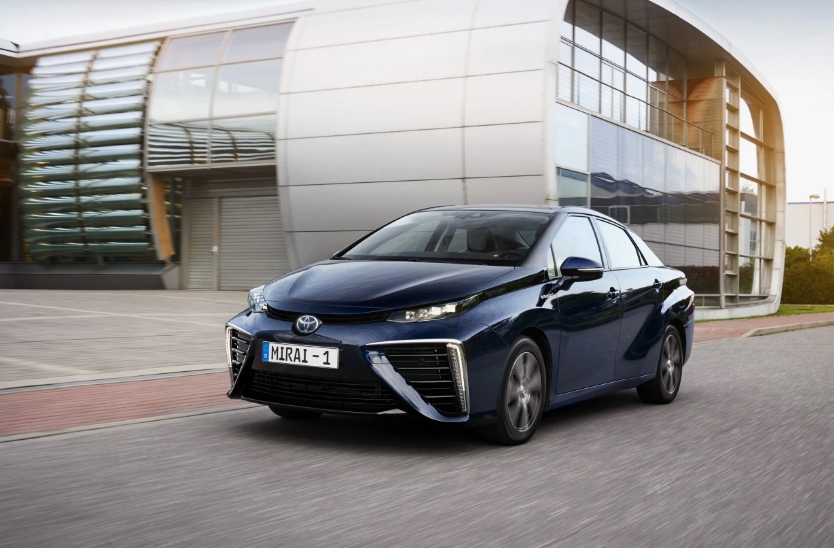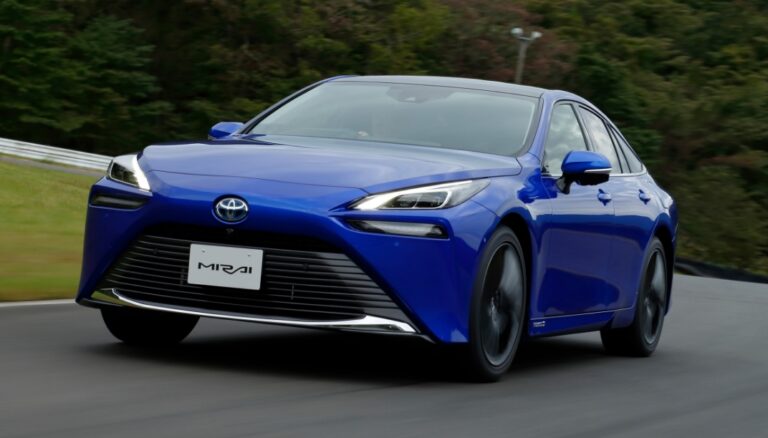2026 Toyota Mirai Specs, MPG, Review
2026 Toyota Mirai Specs, MPG, Review – The “hydrogen economy” has a nice ring to it. It promises a clean, efficient future, with fuel-cell electric vehicles that offer all the fill-and-go range of internal combustion cars, yet produce nothing except water vapour for emissions. Closing the green-energy circle, the hydrogen needed to power these vehicles could be created from bio-waste or by electrolysis using renewable electricity sources such as wind, solar, and hydro power.
However, we’ve had this vision dangled in front of our eyes for so long now it’s starting to feel like the future past. Toyota aims to change that with the Mirai, a car whose name is derived from the Japanese word for “future” and whose mission is to help bring that future into the present.
2026 Toyota Mirai Redesign and Update Plan
Exterior and Interior
Although the Mirai is classed as a mid-size model, the packaging requirements of the fuel cell system means it gives up a fair amount of its interior space, particularly in the back seats. The front seats are roomy and supportive, and there’s the expected luxury touches, including automatic climate control and a heated steering wheel, making for good driver and passenger comfort (except, perhaps, on hot days, when the SoftTex leatherette upholstery can be a bit sticky). Back-seat passengers, however, suffer from cramped foot room (there’s no space under the front seats) and limited headroom. They do at least get cup holders, power outlets (both USB and 12V), climate control vents, seat heaters, and a big armrest console bin – a feature that’s notably missing in the front.
The interior style is quite nice, in a swoopy organic kind of way, and the materials are generally up to snuff, with soft-touch materials in all the important places, good-looking carbon-fibre-style trim pieces, and futuristic capacitive-touch console switches. The centrally-mounted instrument binnacle is reminiscent of that found in the Prius, as is some of the switchgear and controls (the gearshift wand is straight out of the Prius parts bin).
2026 Toyota Mirai Specs
The Mirai is well featured, although it does fall somewhat short of similarly priced luxury cars. Where you might expect to get perforated leather upholstery, ventilated front seats, and an electrically operated park brake, for instance, the Mirai has SoftTex upholstery, unventilated seats, and a foot-operated park brake, with your money instead buying you that high-tech fuel cell stack. Front and rear heated seats, power-adjustable eight-way seats (with two-way lumbar support), driver’s seat memory setting, backup camera with dynamic guidelines, auto-dimming mirror, heated steering wheel, and wireless smartphone charging pad are all standard on the base Mirai.
The 11-speaker JBL stereo sounds great, and the infotainment system – with its seven-inch touchscreen – is mostly up to snuff, although it lacks Android Auto or Apple CarPlay, instead relying on Toyota’s lukewarm Entune app for smartphone connectivity. It does have built-in navigation, satellite radio, and (of course) Bluetooth connectivity, which takes care of the critical functions, and it’s easy enough to use, with large icons and a logical menu system, so overall it gets good marks.
Engine and Performance
Fuel cell energy storage systems have been around for ages, and were refined in the 1960s for use in space missions. A fuel cell combines hydrogen from a storage tank with oxygen drawn from the atmosphere to produce electricity, with the only byproduct being clean water. The electricity is then used to run an electric motor, powering the car. 2026 Toyota Mirai Specs
Practically speaking, this means the Mirai drives just like an electric car. Its motor is rated at a relatively modest 151 hp and 247 lb-ft of torque, so there’s no Insane mode like in a Tesla, and indeed the 0–100 km/h is somewhat pokey at about nine seconds. Off the line, however, the Mirai feels reasonably quick thanks to the electric motor’s instant torque. Noise levels, as expected for an electric car, are impressively low, lending the cabin a serene quality. That said, the Mirai doesn’t operate soundlessly: There are a variety of low-volume clicking, whooshing, and whirring noises, enough so that the owner’s manual contains a whole section on normal operating noises, much like the manual that came with my refrigerator.
The only really quirky part of the driving experience is a button labelled “H2O”, which left me puzzled until I found out it’s to allow you to purge the exhaust system of water prior to entering a garage or parkade, so that the car doesn’t leave a big puddle when you park (the exhaust system is automatically purged after shutdown in order to prevent freezing issues in cold weather).
2026 Toyota Mirai Fuel Economy
Toyota claims a combined fuel consumption rate for the Mirai of 0.93 kg of hydrogen per 100 km, and my real-world driving experience bore this number out pretty closely: For the first couple of days I was doing mostly easy suburban driving and averaged a pretty consistent 0.9 kg/100 km, and when navigating dense city traffic I used about 1.0–1.1 kg/100km.
How this compares to a gasoline or battery-electric vehicle is a little more complicated: Toyota claims an “equivalent” rating of 3.5 Le/100kg, and that may be true on an energy basis, but from a cost perspective the Mirai’s economy isn’t nearly so good. With hydrogen currently costing $12.75/kg in Vancouver and unleaded gas about $1.49, even on my most economical driving days I was using $11.48 worth of hydrogen per/100 km, which is equivalent to the cost of a gasoline car averaging 7.7 L/100 km. By comparison, the $28,535 (freight included) Toyota Corolla Hybrid I had the week prior to testing the Mirai consistently used 4.4 L/100 km, which, at $1.49/L is $6.56/100 km – almost half the cost of running the Mirai. 2026 Toyota Mirai Specs
Battery-electric vehicles do even better. In the most recent electric car I drove, the BMW i3, my actual energy consumption averaged just under 20 kWh per 100 km (including running the cabin heater and seat heaters), which works out to $2.48/100 km at 12.4 cents/kWh (the rate in Vancouver once past the low-usage threshold). So yes, the Mirai makes an environmental and technical statement, but you don’t buy one to save on fuel costs.
2026 Toyota Mirai Safety Features
Toyota has built an impressive record for its standard safety features, and the Mirai is no different, getting the full suite of Star Safety System equipment (stability and traction control, anti-lock brakes, electronic brake-force distribution, brake assist and smart stop technology) and Toyota Safety Sense 2.0 gear (pre-collision braking system with pedestrian detection, cyclist detection and improved low-light capabilities, lane departure alert with steering assist, sway warning system, automatic high beams, dynamic radar cruise control, and road sign assist). 2026 Toyota Mirai Specs
Toyota has also done its homework when it comes to ensuring the Mirai’s hydrogen fuel system is as safe as can be, with crash-resistant composite hydrogen tanks, collision-sensing fuel cut-off valves, and multiple hydrogen sensors to detect any possible leaks or problems. By mounting all fuel system components outside the cabin, Toyota has also ensured that if there is ever a leak, the hydrogen should disperse harmlessly into the atmosphere before it ever reaches explosive concentrations. So you can safely ignore all those images of the Hindenburg bursting into deadly flames, and consider instead that the Mirai’s hydrogen containment system is a lot safer and more robust than the glorified cookie tins used to carry fuel in gasoline-powered cars.
2026 Toyota Mirai Price and Release Date
Trying to sum up the Mirai’s value proposition is a tough one. In simple terms of car-for-the-money, at an estimated cost of $73,870 before freight, you can get a far more luxurious car, or a far more frugal car (or both) for a lot less (Toyota Canada hasn’t released official pricing yet, but the Mirai retails at US$58,500 in California.) 2026 Toyota Mirai Specs
In terms of the actual development and production costs, however, the Mirai is a screaming deal, an 11/10 for value, because there’s no way Toyota is making a profit on these things, certainly not yet. Putting aside the appreciable green cachet, with the Mirai you get a simply astounding amount of advanced technology for the money.

